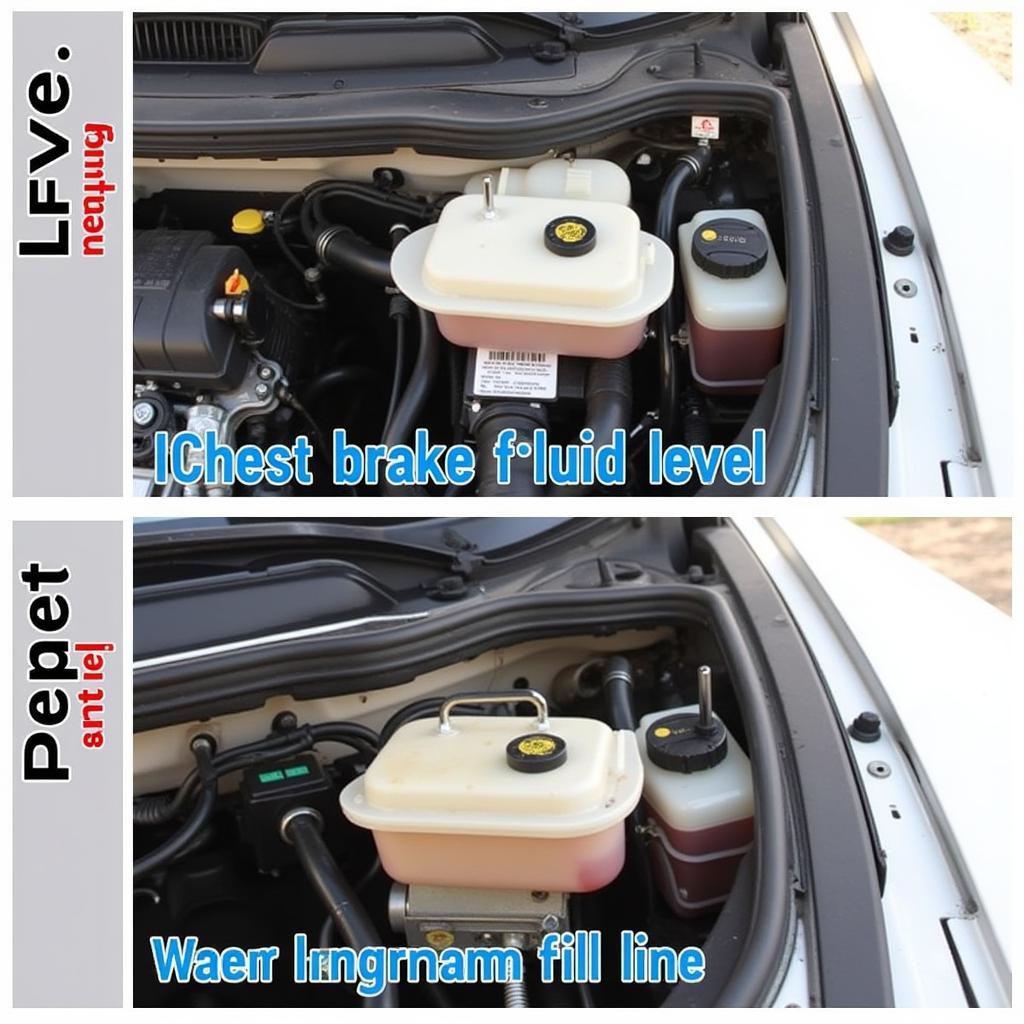The dreaded Nissan Sentra brake pedal warning light can trigger panic in any driver. What does it mean? Is it safe to drive? This comprehensive guide dives deep into the causes of a Nissan Sentra brake pedal warning light, offering troubleshooting tips and solutions, from simple checks to more complex repairs.
A flickering or illuminated brake warning light on your Nissan Sentra dashboard is a critical signal demanding immediate attention. Ignoring this warning could compromise your safety and lead to costly repairs down the line. Let’s explore the potential reasons behind this warning and how to address them.
Understanding Your Nissan Sentra’s Brake System
The braking system in your Nissan Sentra is a complex network of components working in harmony to ensure safe and efficient stopping power. Understanding the basics of this system can help you pinpoint the cause of the brake pedal warning light. Key components include the brake pedal, master cylinder, brake lines, brake calipers, brake pads, and rotors, as well as the brake fluid and various sensors.
Common Causes of the Brake Pedal Warning Light
The brake pedal warning light can illuminate for a variety of reasons. One of the most common is low brake fluid. Brake fluid is essential for transferring pressure from the pedal to the brakes. A leak in the brake lines or a worn-out master cylinder can cause fluid levels to drop, triggering the warning light.
Another culprit could be worn brake pads. As brake pads wear down, they reach a point where sensors embedded within them activate the warning light. This indicates it’s time for a brake pad replacement. Ignoring this can lead to damage to the rotors, requiring more expensive repairs.
A faulty brake light switch can also cause the brake warning light to come on. This switch, located near the brake pedal, signals the brake lights to illuminate when you apply the brakes. A malfunctioning switch can disrupt this signal, activating the warning light.
 Checking Brake Fluid Level in a Nissan Sentra
Checking Brake Fluid Level in a Nissan Sentra
Troubleshooting the Brake Pedal Warning Light
If your Nissan Sentra’s brake pedal warning light comes on, the first step is to check your brake fluid level. If it’s low, top it off with the correct type of brake fluid recommended for your Sentra. However, simply adding fluid isn’t a long-term solution. A low fluid level often indicates a leak, requiring professional inspection. You can learn about upgrading your car’s audio system by checking out how to make your old car radio bluetooth.
Next, inspect your brake pads. If they appear thin or worn, it’s time for a replacement. You might consider having a professional mechanic check your brake light switch as well. A simple test can determine if it’s functioning correctly.
“Regular brake system maintenance is crucial,” says automotive expert, John Miller, ASE Certified Master Technician. “A simple inspection can prevent minor issues from escalating into major, costly repairs.”
When to Seek Professional Help
While some issues can be addressed with DIY solutions, others require professional expertise. If you’re unsure about the cause of the brake warning light, or if you suspect a more complex problem like a faulty ABS system, it’s best to seek professional help.
“Don’t underestimate the importance of a properly functioning brake system,” adds Miller. “Your safety is paramount, and a qualified mechanic can diagnose and repair any issues effectively.”
 Professional Brake Inspection on a Nissan Sentra
Professional Brake Inspection on a Nissan Sentra
Preventing Future Brake Problems
Regular maintenance is key to preventing future brake issues. This includes routine brake inspections, timely brake pad replacements, and ensuring your brake fluid is at the correct level and quality. You may also want to see where can i go to install a car radio for more car upgrade ideas. For older car models, knowing the best bluetooth car radio 2015 uk can be helpful. Or if you’re a fan of classic cars, information on vintage car radio bluetooth conversion can be useful. If you own a Sony radio, knowing how to retrieve your sony car radio bluetooth code is also essential.
Conclusion
The Nissan Sentra brake pedal warning light is a serious indicator that shouldn’t be ignored. By understanding the potential causes and following the troubleshooting steps outlined in this guide, you can address the issue promptly and ensure your safety on the road. Remember, regular maintenance is the best way to prevent future brake problems and keep your Nissan Sentra running smoothly.
FAQ
-
What should I do if my Nissan Sentra brake pedal warning light comes on while driving? Pull over safely and immediately check your brake fluid level. If it’s low, add fluid if you have some, but proceed with caution and seek professional help as soon as possible.
-
How often should I check my brake fluid level? It’s recommended to check your brake fluid level at least once a month.
-
How often should I replace my Nissan Sentra’s brake pads? Brake pad lifespan varies depending on driving habits and conditions. Generally, they should be replaced every 25,000 to 65,000 miles.
-
Can I drive my Nissan Sentra with the brake warning light on? While technically possible, it’s highly discouraged. Driving with a brake warning light on can be dangerous and could lead to further damage.
-
Is the brake warning light the same as the ABS light? No, they are separate warning lights. The ABS light specifically indicates a problem with the Anti-lock Braking System.
-
What does it mean if my brake pedal feels spongy? A spongy brake pedal often indicates air in the brake lines, which requires bleeding the brakes.
-
How much does it cost to fix a Nissan Sentra brake pedal warning light issue? The cost varies depending on the underlying cause. A simple brake fluid top-up is inexpensive, while more complex repairs can be more costly.


